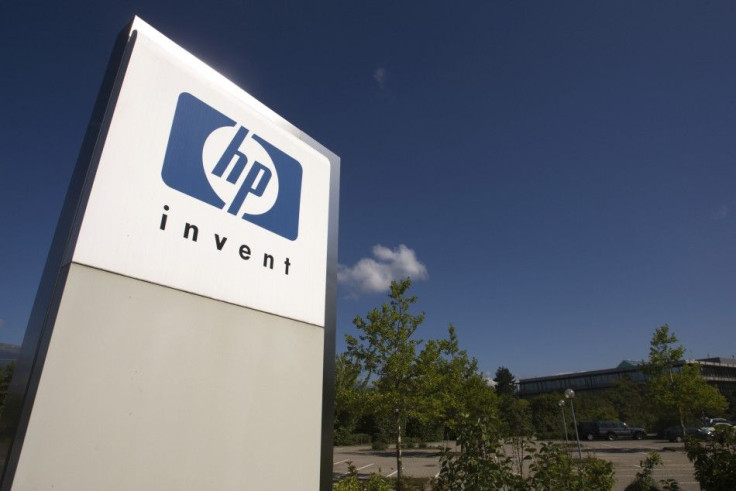Technology Focus: Can HP Find Excellence Again?

Thirty years ago, management consultants Tom Peters and Robert Waterman penned the business bestseller “In Search of Excellence: Lessons from America's Best-run Companies.”
One of those companies was Hewlett-Packard (NYSE: HPQ), then the biggest maker of instruments and analytical tools, with a new line of high-speed computer workstations, PCs and printers.
Peters and Waterman lauded the practices of the Palo Alto, Calif., company, whose co-founders, Bill Hewlett and David Packard, two Stanford University graduates with degrees in electrical engineering, were still alive.
Their “HP Way” of collecting company intelligence by respecting the insights of every employee was held up as an example to all companies. Their practice of sitting in offices with open doors or cubicles was praised to the hilt.
So was Hewlett and Packard's habit of “management by walking around,” to quickly learn about problems and controversies as well as soliciting good ideas from the staff.
Contemporary HP could use a dose of that now. It's now the world's largest computer company, with revenue for the fiscal year ended Oct. 31 dipping 5 percent to $120.4 billion, still likely to keep it ahead of International Business Machines Corp. (NYSE: IBM) on an annual basis.
Under Meg Whitman, its third CEO in 14 months and the fourth outsider to hold the job, HP can't make any money. Its full-year net loss was a record $12.7 billion, or $6.41 a share, reversing prior-year net income of $7.1 billion, or $3.32 a share.
The fourth quarter included yet another surprise writeoff of $8.8 billion for last year's $11.2 billion acquisition of UK multimedia specialist Autonomy Plc under prior CEO Leo Apotheker.
Whitman, who voted for the move as a director, now charges the sale was fraudulent. HP has reported the case to the U.S. Securities and Exchange Commission and the UK Serious Fraud Office.
In the third quarter, HP wrote off $9.1 billion as an “impairment charge” stemming from the $13.9 billion acquisition of EDS in 2008 under then-CEO Mark Hurd. That was on top of other charges related to layoffs and restructuring Whitman had said were required to rebuild the company.
So Whitman, who made her pile as CEO of eBay (Nasdaq: EBAY), and blew $144 million of it in a failed campaign for governor of California in 2010, has presided over wiping out about $100 billion in HP's market value in just 14 months at the helm. One of her directors, Ralph Whitworth, the noted value investor, won his board seat weeks before she became the boss by buying shares of what he considered an undervalued company.
Investors and customers might be excused for wondering who's managing the store. And the products. One of the anecdotes Peters and Waterman cited was about an airplane passenger who lowers the tray table to find coffee stains and trash – and then wonders how the mechanics maintain the engines.
HP's board includes the well-respected insider, Ann Livermore, who was removed as head of its enterprise services business just before the last CEO, Apotheker, was fired in September 2011. Its chairman is Ray Lane, the former president of Oracle Corp. (Nasdaq: ORCL), the No. 1 database developer.
There's also the CEO of Booz, the global management consultants; Marc Andreessen, the “boy wonder” who created the Mosaic web browser as a college student, as well as the CEO of McKesson (NYSE: MCK).
Who was paying attention? How about the botched acquisition of Palm and last year's entry into the tablet market with the TouchPad? Recall it was a teenage Steve Jobs who once called up Bill Hewlett for ask for parts to build a frequency counter long before he co-founded Apple (Nasdaq: AAPL).
Then there were the boardroom scandals:
Two years ago, one surfaced over payments to a female contractor who was close to then-CEO Hurd. After an investigation into allegations of sexual harassment, he was dismissed over expense account irregularities.
Earlier, in 2006, when Hurd was still an HP newcomer, there was another boardroom uproar that resulted in the resignations of several directors, including non-executive Chairman Patricia Dunn.
That time, then-director Tom Perkins, a partner of the venerable Kleiner Perkins Caufield & Byers venture capital firm, claimed his email account had been hacked. Outsiders were able to learn about HP strategic planning, Dunn claimed after CNET published some stories about them.
Investigation showed Hurd hired an outside law firm and detectives who used false pretenses to enter Perkins's email accounts in an effort to finger him for leaking. After Dunn quit, she was indicted under California charges of identity theft and fraud, which were dismissed after five months.
But Hurd also stepped into the role of chairman as well as CEO, which he held until his own fall.
His predecessor, Carleton (Carly) Fiorina, HP's first CEO from outside the company, had her own problems even before she was fired in February 2005. She was ousted after an earnings shortfall but triggered opposition early in her tenure when she organized the $22.5 billion acquisition of Compaq Computer Corp. that was completed in 2002.
While the Compaq takeover added to HP's existing PC lines and made the enlarged HP the No. 1 PC maker worldwide until the third quarter of this year, the deal was opposed by board members including Walter Hewlett, a son of co-founder Bill Hewlett.
Fiorina labelled Hewlett “a musician and academic” who didn't understand her strategy, despite representing a family that together with the Packards owned nearly 20 percent of the company's shares. She ensured Hewlett was denied renomination as director.
To be sure, Hewlett personally mounted a proxy battle against the Compaq deal and also sued the company, alleging “questionable tactics” in proxy soliciations.
Clearly, HP needs to send out an SOS for either new management, new directors and new confidence. It's time for a new search for excellence.
© Copyright IBTimes 2024. All rights reserved.






















